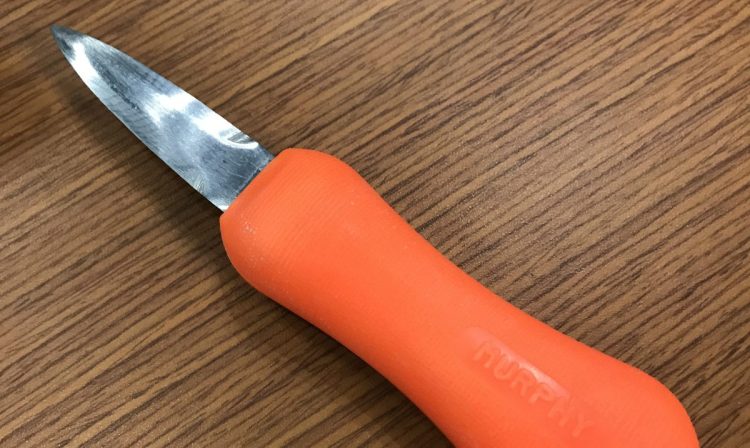Using the right tool for the job is always good advice. Recently, when I took an oyster-shucking class in Portland, Chris Sherman, president of Island Creek Oysters, made just that point about shucking knives. His favorite is one he designed himself.
The blade is milled by a 150-year-old knife manufacturer in Athol, Massachusetts, and its bright orange handle is composite plastic made from recycled ocean plastic.
“We teamed up with folks that collect derelict fishing nets from around the ocean, and then grind them up and put them into plastic,” Sherman said.
The knife is based on a French knife, Sherman said, “beefed…up a little bit” to be able to handle strong-shelled East Coast oysters. “You need to tailor your knife to you, and you need to tailor your knife to the oyster that you’re shucking.”
Eastern oysters are much smaller than Louisiana ones, for instance, but attach strongly to their shells, so it takes a sharper knife to pry them open. The knife shouldn’t be too sharp, lest the shucker wound herself, Sherman said, “but you want something that will get into the oyster and do the job of cutting that adductor muscle away.”
The adductor muscle is the muscle that attaches the oyster to the shell. Cutting it can be tricky, and if it’s not done just right the knife can mutilate the oyster meat. It will taste fine, but won’t look very pretty.
The other thing Sherman looks for in an oyster knife is a durable handle. Wood is durable and looks fancier than orange plastic, but if sustainability is important to you, go with the orange and feel good about the fact that you are removing plastic trash from the ocean that can kill marine life.
The orange shucking knives are sold for $20 at The Shop, Island Creek’s oyster bar at 123 Washington Ave. in Portland.
— MEREDITH GOAD
Send questions/comments to the editors.


